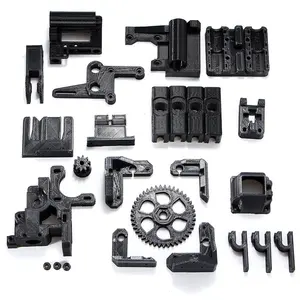Introduction to Mold Design
Mold design is an essential process in manufacturing that involves creating molds to shape materials, particularly plastic, into desired components. It plays a critical role in various sectors, including automotive, consumer electronics, and medical devices. Effective mold design not only enhances product quality but also optimizes manufacturing efficiency. Understanding different aspects of mold design is vital for businesses aiming to improve production capabilities and reduce costs.
Types of Mold Design
Mold design comes in various types, each suited to specific applications and manufacturing methods. The following are the primary categories:
- Injection Mold Design: Primarily used for producing plastic parts, this design allows for the injection of molten material into a mold cavity, cools it, and ejects the final product.
- Blow Mold Design: Used for hollow products, such as bottles, this method involves blowing air into a heated plastic tube to expand it into a mold.
- Compression Mold Design: Suitable for manufacturing rubber and thermosetting plastics, this method involves placing material in an open, heated mold cavity, closing the mold, and applying pressure to form the final part.
- Rotational Mold Design: Ideal for making larger hollow items, this process rotates the mold around two perpendicular axes, allowing the molten material to evenly coat the interior surfaces.
Key Features of Mold Design
Effective mold design incorporates several crucial features that enhance performance and functionality:
- Precision Engineering: Ensuring tight tolerances and accurate dimensions is vital for high-quality production, reducing the need for post-processing.
- Cooling Systems: Incorporating efficient cooling channels helps to reduce cycle times and improve the overall production speed.
- Material Selection: Choosing the right materials for both the mold and the product affects durability, finish, and cost-efficiency.
- Ease of Maintenance: A well-designed mold should allow for easy disassembly and replacement of parts to minimize downtime during production.
Applications of Mold Design
Mold design has a broad spectrum of applications across various industries, reflecting its versatility and importance:
- Automotive Components: Mold design is crucial in producing parts such as dashboards, panels, and interior fittings in vehicles.
- Consumer Electronics: Devices like smartphones and gaming consoles rely heavily on mold design for their casings and internal components, ensuring aesthetic appeal and functional integrity.
- Medical Devices: The design of molds for items like syringes and medical packaging is critical for compliance with health regulations and safety standards.
- Packaging: Mold design is fundamental in creating attractive and functional packaging solutions for all sorts of products, from food and beverage to cosmetics.





















































